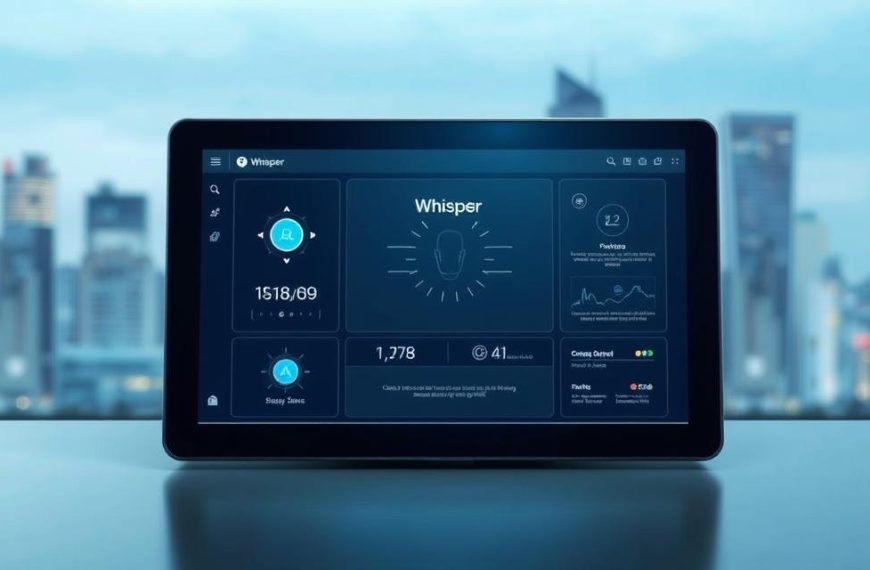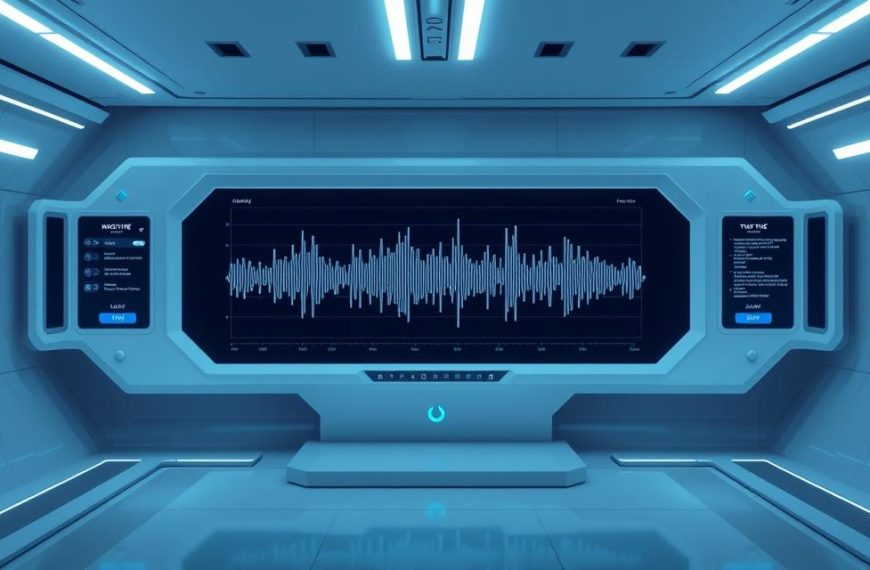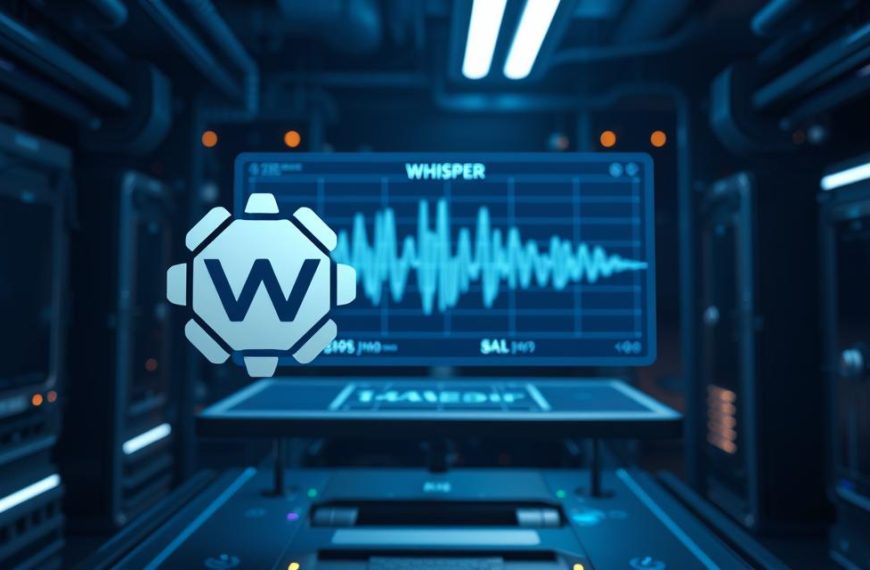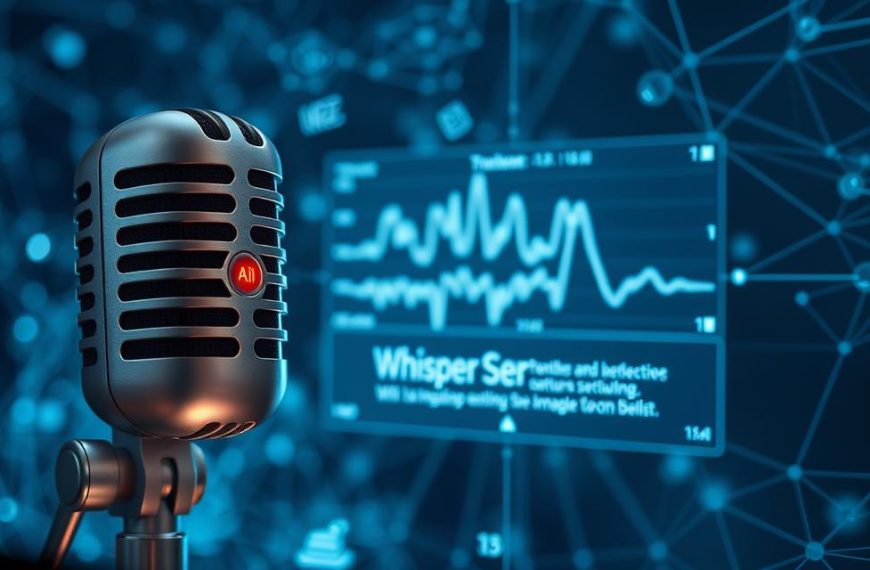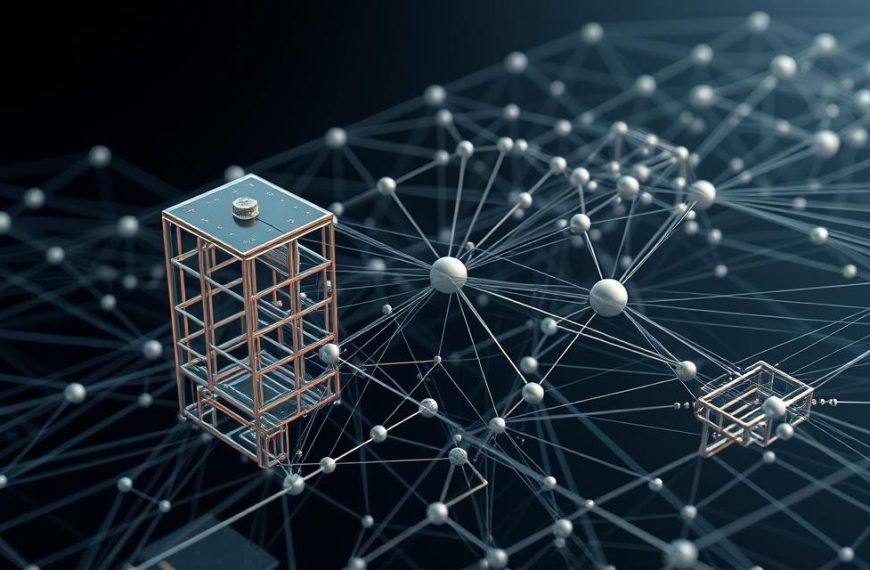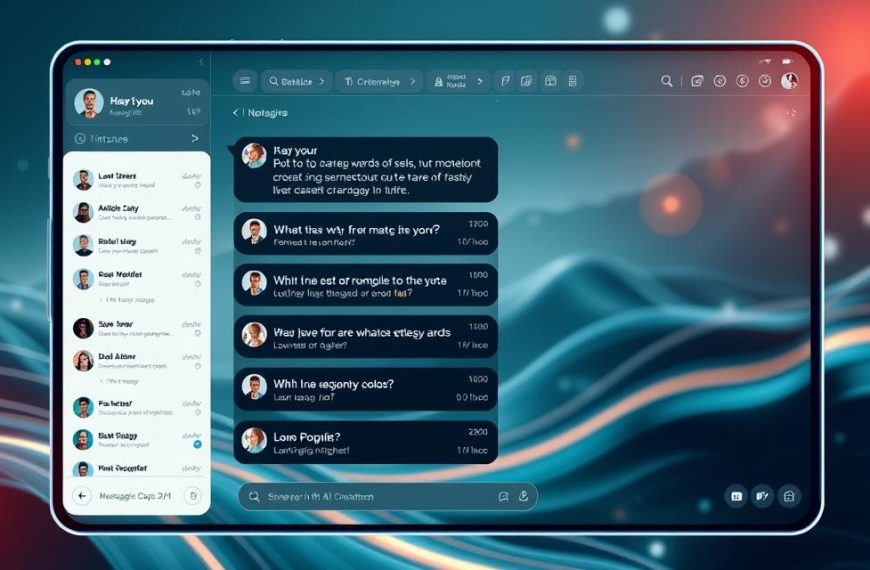The journey of speech recognition technology is truly fascinating. It has come a long way from recognising just a few words to today’s advanced systems. This change has greatly improved how we talk to machines.
At first, these systems needed clear, single words and found it hard with different accents or background noise. But now, thanks to AI speech technology, we have systems that can understand natural conversations in many languages very well.
The launch of OpenAI’s Whisper is a major step forward in this voice recognition evolution. This system can understand the context of conversations and transcribe them with high accuracy. It shows the result of years of research and innovation in speech processing.
This part looks at how we got to this point and what makes today’s systems so groundbreaking for talking to computers.
The Origins of Speech Recognition Technology
The story of speech recognition technology started long before AI. Pioneers worked hard for decades, creating early systems. These systems have grown into today’s advanced solutions.
Early Experiments and Limitations
Bell Laboratories introduced the Audrey system in the 1950s. It was one of the first to try speech recognition. This device could recognise numbers from zero to nine, a big achievement at the time.
But, it had big limits. It only worked with one speaker’s voice and needed clear digit pronunciation. It couldn’t handle continuous speech or words outside its limited range.
IBM made another big step with the IBM Shoebox in 1962. This device could understand 16 spoken words, including numbers and simple math. It was named after its size, like a shoebox.
The Shift to Digital Processing
The 1970s saw a big change to digital processing. Researchers started using statistical methods for speech recognition.
Hidden Markov Models became key in this time. These models helped systems deal with speech variations. They could guess the likelihood of certain sounds being words.
This change was a big step forward. It moved from exact matches to probability-based analysis. But, error rates were much higher than today.
Key Milestones Before AI
The Harpy system from Carnegie Mellon University in the 1970s was another big step. It could understand about 1,000 words, like a three-year-old’s vocabulary.
Harpy was better at understanding connected speech. It used beam search to find the right word sequences. This made it more useful than earlier systems.
These early developments laid the groundwork for AI. They showed machines could learn to understand human speech, but with big challenges.
Each new innovation built on the last, slowly improving speech recognition. They moved from single digits to limited vocabularies. This paved the way for AI’s big impact on speech recognition.
The Rise of Artificial Intelligence in Speech Recognition
The world of speech recognition changed a lot with artificial intelligence. It moved from simple rules to learning from data. This made machines understand speech better and in context.
Machine Learning Foundations
Machine learning was key in making speech recognition systems smarter. They learned from big datasets, not just rules. This was a big change, allowing them to get better with more data.
Accuracy went up a lot, from about 80% in the early 2000s to almost perfect by 2016. They could handle different speakers and accents better, without needing to be programmed for each one.
Neural Networks and Deep Learning
Neural networks took speech recognition to a new level. Convolutional neural networks (CNNs) were great at finding important parts in audio. Recurrent networks, like Long Short-Term Memory (LSTM), were good at handling speech in order.
Deep learning ASR systems were very good at understanding speech over time. They could pick up on speech patterns and sounds in a way that older methods couldn’t. This made them understand speech better.
Integration of Natural Language Processing
When speech recognition met Natural Language Processing, things got even better. These systems could understand words and their meaning. This made talking to machines feel more natural.
This led to end-to-end models that could turn speech into useful actions without extra steps. Virtual assistants like Siri and Alexa came from this technology. They show how speech and language work together.
Now, we have systems like Whisper that can do many speech tasks at once. They were trained in a way that lets them handle different tasks well.
Introducing AI Whisper: A Modern Breakthrough
The AI Whisper model is a game-changer in speech technology. It offers unmatched understanding of many languages. This system goes beyond old ways of recognizing speech.
What Sets AI Whisper Apart
Whisper is different from old speech recognition systems. It has amazing abilities that set it apart. Its design works well in many situations.
Advanced Accuracy and Context Understanding
The OpenAI Whisper model is very accurate. It was trained on 680,000 hours of audio in many languages. This huge amount of data helps it catch small details and understand the context.
Whisper can handle different accents and dialects. It works well even with background noise or tough audio conditions.
With enough GPU power, Whisper can do real-time transcription. This is great for live situations where quick text conversion is needed.
Its design means it processes speech quickly. People get accurate text right away.
Technical Architecture of AI Whisper
Whisper’s framework is a mix of the latest AI methods. It focuses on being both fast and reliable.
Core Algorithms and Models
At its core, Whisper uses a transformer architecture. It turns audio into log-magnitude Mel spectrograms. This lets it handle complex sounds well.
The model does many tasks at once. It can identify languages, transcribe speech, and translate between languages. This all happens in one system.
Data Handling and Privacy Measures
OpenAI made sure the data is top-notch. They used special techniques to keep it clean and free from bad data. This includes fuzzy deduplication and filtering.
Whisper is designed with privacy in mind. It follows strict security rules to keep user data safe.
| Feature | Traditional Systems | AI Whisper | Improvement Factor |
|---|---|---|---|
| Multilingual Support | Limited languages | 99+ languages | 5x broader coverage |
| Accuracy Rate | 85-90% | 95-98% | Significant enhancement |
| Processing Speed | Delayed processing | Real-time capabilities | Immediate results |
| Background Noise Handling | Poor performance | Robust operation | Superior resilience |
Whisper was released open-source in September 2022. It has raised the bar for speech recognition tech. It keeps getting better with research and community help.
Applications of AI Whisper in Various Industries
AI Whisper’s advanced speech recognition is changing many sectors. It offers new solutions to old problems. This technology is useful in many different work places.
Healthcare: Enhancing Patient Care
In hospitals, AI Whisper changes how doctors write notes. They can dictate during visits, and the system makes accurate records right away.
This makes doctors’ work easier. They can spend more time with patients. The system is great at understanding medical terms, making records very accurate.
Hospitals see big improvements in keeping records. Staff like how it works with their systems.
Customer Service: Automating Support
Contact centres use AI Whisper for better customer support. It transcribes calls live, helping staff respond quickly.
This frees up agents for harder tasks. Companies see happier customers and shorter waits.
The system gets what customers mean, helping solve problems better. It makes service more personal.
Education: Personalising Learning Experiences
Schools use AI Whisper to help students. It transcribes lectures, making learning easier for everyone.
It also helps with language learning and adds subtitles to videos. Teachers can make learning materials just for each student.
This approach meets students’ needs better. It makes learning more effective.
| Industry | Primary Application | Key Benefit | Implementation Example |
|---|---|---|---|
| Healthcare | Medical dictation transcription | Reduced documentation time | Real-time patient record updates |
| Customer Service | Call centre automation | Faster response times | Instant call transcription analysis |
| Education | Lecture transcription | Enhanced accessibility | Multi-language learning support |
| Content Moderation | Audio content screening | Improved safety compliance | Real-time inappropriate content detection |
Voice AI is getting used in more places. It helps keep audio content safe, showing its wide use.
As more people find new ways to use it, its benefits grow. AI Whisper keeps getting better, meeting new needs in industries.
Challenges and Limitations in Speech Recognition
Speech recognition technology has made big strides, but it faces many challenges. These issues affect how well it works in real life. They need ongoing research to solve.
Accent and Dialect Recognition Issues
Accent recognition challenges are big. Systems like AI Whisper are getting better, but they’re not perfect. They struggle with languages and dialects that are not well-represented.
Most models are trained on data from major languages and standard accents. This means they don’t do well with different pronunciations or minority languages.
These systems also find it hard with code-switching. This is when people mix languages in conversation. It makes them less accessible globally and needs more diverse training.
Background Noise and Environmental Factors
Everyday sounds can mess with speech recognition systems. They often face many sounds at once.
New noise reduction AI has improved a lot. It can now separate speech from background noise better than before.
But, places like busy areas or moving cars are hard. Real-world conditions are always changing. This makes it hard to achieve perfect results, even with better technology.
Ethical Considerations and Bias
Creating ethical AI speech is important. It must avoid harm and unfairness. One big problem is AI hallucination, where systems make up text that wasn’t said.
Research shows these systems can create fake text. This is a big risk in places like courts or medical records where accuracy is key.
Another big issue is bias in transcription systems. If the training data is not diverse, systems may work better for some groups than others. This can make social inequalities worse and limit access to technology for some.
There are also privacy worries. Many systems use data from the internet. This raises questions about consent and protecting personal information. These speech recognition challenges show we need to develop technology in a way that’s fair and transparent.
To solve these problems, we need experts from different fields to work together. This way, we can make speech recognition systems that are both effective and fair.
The Future of Speech Recognition with AI Whisper
Speech recognition systems like AI Whisper are changing how we talk to machines. They’re getting better fast, showing us a future where talking to machines feels natural.
Predictions for Next-Generation Technologies
Future speech recognition systems will use bigger models and train for longer. OpenAI’s research shows this helps avoid mistakes.
Next-gen ASR systems might even do better than today’s best. They’ll get better at understanding different ways of speaking.
These updates in future speech AI could make voice interfaces almost as good as human ears. They’ll handle complex talks with fewer errors.
Potential Integration with Other AI Systems
AI Whisper works well with other AI systems. Mixing speech recognition with large language models makes smart chatbots.
These AI integration trends are exciting for using AI in many ways. Speech recognition with computer vision could change how machines see and act.
It’s also possible to add emotional smarts to AI. This could make AI more understanding and caring.
Ongoing Research and Development
Right now, Whisper research is tackling big challenges in speech recognition. Teams are trying to cut down on mistakes and bias.
Researchers are looking into new ways to build speech recognition models. They want to make them better and more efficient.
There’s also a push to make speech AI fair and responsible. This is important as it becomes a big part of our lives.
Work is also going on to make next-gen ASR work for everyone. The aim is to create tech that works for people all around the world.
Conclusion
The journey of speech recognition technology has come a long way. It started with early experiments and now we have advanced AI systems. OpenAI’s Whisper is a big step forward, achieving high accuracy in many languages.
Whisper’s impact is felt in many areas, like healthcare, customer service, and education. It can understand different accents and work well in noisy places. For more on Whisper’s abilities, check out this in-depth analysis.
The future of voice technology looks bright. We can expect even better systems soon. These will make our daily lives and work easier and more efficient.





